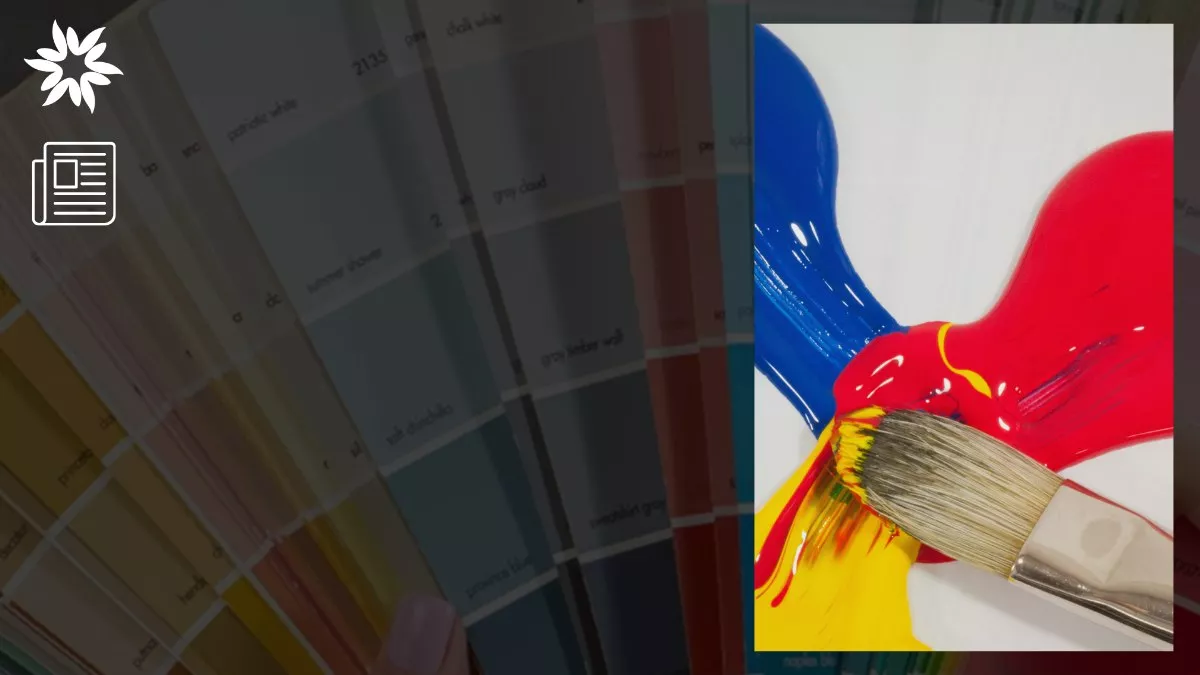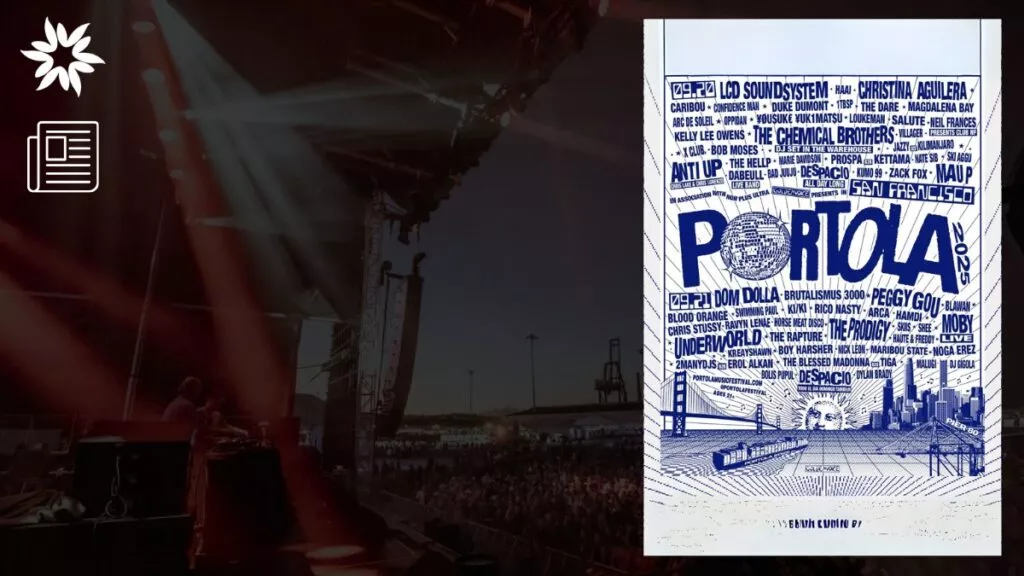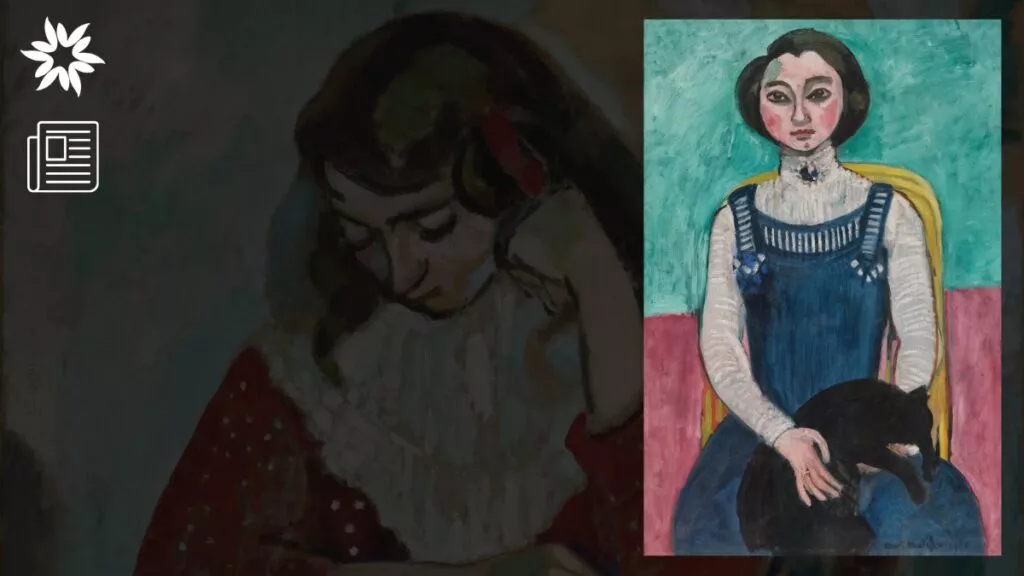If you’ve tried it before, mixing paint colors can be challenging, especially when achieving the exact shade you’re after seems impossible.
It’s all too common to end up with colors that are too dark, too light, or just plain muddy.
And without question, plenty of artists go through a lot of trial and error (and some messy disasters) while figuring this out.
Thus, we’ve put together this guide with a simple system that makes it easy and accurate.
Get ready to ditch the frustration and enjoy the confidence of creating the perfect color for every project, every time.
Key Takeaways
- Cyan, magenta, and yellow are the primary colors used to create a full range of colors.
- Organize a chart for easy reference to understand how different colors mix and appear.
- Acrylics, oils, and watercolors mix differently, so knowing how each works can save time and avoid mistakes.
First Things First: The Real Primary Color
If you’re like most people, you were probably taught that the primary colors are red, yellow, and blue.
But here’s a surprise: the true primary colors that give you the best range of colors are cyan, magenta, and yellow—yes, just like in a printer.
So, here’s how it works with these primaries:
- Cyan + Magenta = Blue
- Cyan + Yellow = Green
- Magenta + Yellow = Red
- All three together (cyan + magenta + yellow) = Black
With these primaries, you’ll have a complete range of colors at your fingertips, and you’ll finally be able to say goodbye to muddy mixes.
Think of these as your core colors for paint-mixing success!
Color Theory Terms to Know
Before we dive into mixing, here are some must-know terms that will make everything way easier:
- Hue: Basically, the actual color itself (like red or green).
- Tints, Shades, and Tones: These refer to how you alter a hue. Tints are made by adding white (lighter), shades by adding black (darker), and tones by adding gray (muted).
- Complementary Colors: These are opposite on the color wheel, like red and green, and they help each other “pop.”
- Analogous Colors: Colors next to each other on the wheel, like blue and green, which are super harmonious together.
Create a Color Chart (Your Handy Mixing Guide)
A color chart is one of the best tools for mixing colors.
It’s like a cheat sheet showing you what each color looks like when mixed with other colors, so you can see exactly what shade you’ll get before you even start mixing.
How to Make a Color Mixing Chart
Here’s a tried-and-true color mixing chart method:
- Plan Your Squares: Count the number of colors you’ll use, then add one extra row for the names. This total is the number of squares you’ll need.
- Draw the Grid: Using a ruler, mark evenly spaced points along your canvas or paper and connect them to make a grid.
- Arrange Colors: Write your colors in a way that makes sense for you. Some people like to group colors from cool to warm (blue, green, and purple on one side, red, orange, and yellow on the other).
- Add Colors: Start filling in each square with a mix of each color. Begin with the color in its pure form, then mix it with white, black, or other colors to see how it changes.
Once you have this chart, you’ll always know what each color mix will look like. This saves time and makes getting the exact shade you want much easier.
The Basics of Mixing Paint Colors (Without Losing Your Mind)
Now that you’ve got your color chart, let’s talk about the general rules for mixing paint.
These tips will help you get the desired color and avoid common mistakes.
- Don’t Mix Different Paint Types: For example, don’t try to mix latex paint with oil-based paint; they won’t blend well.
- Brands and Finishes Can Mix: You can usually mix brands or different finishes (like matte and gloss), but do a small test first.
- Try Small Batches First: Before mixing large amounts, test small amounts to see if you like the shade.
- Mix Thoroughly: Stir your paint well, just like you would mix a cake batter. Paint stores use machines to shake the paint because it needs to be fully mixed to look right.
Tips for Mixing Different Types of Paint
Each type of paint has quirks when it comes to mixing, and knowing these can make a big difference in getting the right shade.
Mixing Acrylic Paint
Acrylic is one of the easiest paints to start with, as it’s water-based and dries quickly.
But keep in mind that acrylic paint usually dries a bit darker than it looks when wet.
- Organize Colors: Place your primary colors (cyan, magenta, and yellow) on the outside of your palette, and bring your mixes into the center.
- Use Water to Adjust Thickness: If your paint is too thick, dip your brush in a bit of water to thin it out.
- Lighten Colors Ahead of Time: Since acrylics dry darker, add a touch of white to lighten your shade before it dries.
Mixing Watercolors
Watercolors can be tricky because they’re very thin and can bleed easily. The trick with watercolor is to use it sparingly and clean your brush well between colors.
- Use a Palette with Dividers: Watercolors spread easily, so a palette with sections can help you control the flow.
- Wipe Your Brush: Clean your brush between each color to keep your shades clean and pure.
- Adjust Water Levels: Watercolors can be very runny. So, if your mix is too watery, dab your brush on a paper towel to soak up some of the excess water.
Mixing Gouache
Gouache is similar to watercolor but is thicker and can be opaque. You can mix it directly on the paper or canvas for layered effects.
- Use Direct Blending: Gouache mixes well on the page, so you don’t need to blend everything on the palette.
- Adjust with Water: You can thin it out with water, but it’s not required unless you want a lighter effect.
Mixing Oil Paint
Oil paint has a thick, buttery feel and dries slowly, making it ideal for rich colors and deep blends.
- Use a Palette Knife for Mixing: Oil paint is thick, and using a palette knife instead of a brush will keep your brushes in good shape.
- Avoid Water: Water doesn’t work with oil paint, so use linseed oil or a similar medium if you want a thinner consistency.
- Take Your Time: Oil paint doesn’t dry quickly, so you can work with it longer to get the exact shade you want.
Matching Colors Exactly
Sometimes, you need a specific color, and it can be hard to get it just right.
Here’s how to match colors without getting frustrated.
- Look at Your Color Chart: Before you start mixing, check your color chart to find the closest match.
- Make Tiny Adjustments: Start with small amounts of other colors to get the right shade. Adding a little more white or black can help you make small changes.
- Write Down Your Ratios: Keep track of the proportions you’re using so you can make the same color again if you need more.
Should You Buy Pre-Mixed Colors?
If you’re using a certain color a lot (like dark green for landscapes or a specific brown for portraits), it’s worth buying that color already mixed. Not to mention, it’ll save you time and ensure consistency.
How to Mix Colors Like a Pro: Extra Tips and Techniques
Ready to go beyond the basics? Here are some extra tips for mastering color mixing.
Premix Colors for Big Projects
Premixing your colors can save time and hassle if you’re working on a big project.
- Mix Enough for the Whole Project: You don’t want to run out of a custom mix halfway through!
- Store in Small Jars: Use small, airtight containers to keep your mixes fresh.
Avoiding Muddy Colors
If you’ve ever mixed two colors and ended up with a dull, muddy shade, here’s how to avoid it:
- Stick to Two Primaries: Mixing only two primary colors (like cyan and yellow) instead of all three helps keep the color bright and clean.
- Clean Your Brush Between Colors: Any leftover paint on your brush can throw off your new color.
Solving Common Mixing Problems
Even if you follow every tip, color mixing doesn’t always go perfectly.
Here’s how to fix some common problems:
- Too Dark? Add a small amount of white or a lighter color.
- Too Light? Add a tiny bit of black or a darker color.
- Too Opaque? Use a glazing medium for oils or water for acrylics to make it more transparent.
Enjoy the Freedom of Mixing Paint Colors!
Now that you’ve got all these tips and tricks, mixing paint colors should feel a lot less stressful and a lot more enjoyable.
You know the true primary colors (cyan, magenta, yellow), how to make and use a color chart, and how to handle different paint types.
And remember, practice makes perfect!
The more you mix, the better you’ll get at predicting how colors will look when they’re combined.
So grab your paints, get creative, and have fun with color mixing.
Let your creativity flow, and don’t be afraid to make mistakes—they’re all part of the process.








